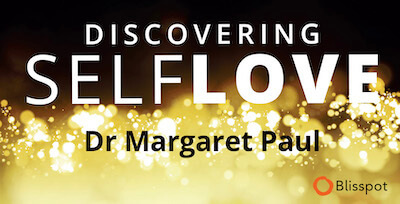I received the following question from Leia, a woman who attended one of my webinars:
“How can you achieve self-love when you have deep disappointment with the way your life turned out?”
This is a very interesting question, because how your life is turning out is directly related to your self-love, but it seems that Leia believes that self-love is the result of how her life is turning out rather than the cause of it.
Many people have been taught to believe that life is a random crap-shoot and that the best we can do is just go along for the ride.
Nothing can be further from the truth!
The truth is that our thoughts are creative. We are spiritual beings having an experience in a body, and we are constantly being guided and supported by nonphysical spiritual beings and by the powerful love energy we call God.
When we think a thought, that thought has energy. It has a frequency, and that frequency draws to itself like frequencies. When we think negative, judgmental thoughts about ourselves and others, these low-frequency thoughts draw low-frequency results to us. If you think, “I’m not good enough to be loved,” the Universe says, “Okay,” and goes about manifesting that thought. When you think the thought “I’m a beautiful child of God and I’m blessed,” the Universe says “Okay,” and goes about manifesting that thought.
The question Leia asked indicates that she isn’t currently loving herself, and her life is reflecting that. Instead of going within and noticing her lack of self-love that is resulting in her disappointment in her life, she is saying that she can’t love herself until her life gets better. Can you see the problem with this thinking?
Until Leia opens to understanding that we create our lives with our thoughts and our resulting behavior, she will be stuck continuing to create a disappointing life.
A Personal Example…
I used to believe that being a “good girl” – which meant giving myself up and sacrificing myself for others – was the loving way to be. This resulted in feeling alone, unappreciated and unloved by everyone in my life. At the time I didn’t realize that others were treating me the way I was treating myself, and that the Universe was supporting my self-abandonment. It wasn’t until I become quite ill – even though I was eating well and getting enough exercise – that I started to realize something was very wrong. Fortunately, that’s when I met Dr. Erika Chopich and Inner Bonding was downloaded to us from Spirit.
Of course, it took time for me to shift from trying to control others by being a ‘good girl’ to focusing on loving myself, but as I learned to do this, people started treating me with respect and my life became much more rewarding. As I changed my thinking from self-sacrifice to self-love, it didn’t take long for my health to greatly improve.
My anxious, fearful judgmental thoughts were creating my poor health and my disappointment in my relationships. In the same way, my accepting and compassionate thoughts have created an incredible life that I couldn’t even imagine when I was abandoning myself. I’m so blessed now in so many ways – where I live in nature, my deeply fulfilling work, how I spend my free time, my beautiful art studio and my creativity, my friends and family, my animals, and my profound spiritual connection that I can feel always here, supporting me in my highest good.
If you wait for your life to change in order to change your thoughts and behaviour from self-abandoning to self-loving, you will wait forever. Change your thoughts and behaviour from judgment of yourself and others to gratitude, love and compassion for yourself and others, and you will see how profoundly your life changes!








